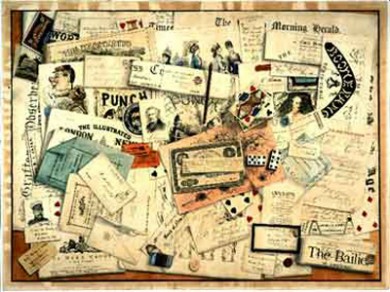Stray Leaves
27 February – 29 April 2001
This exhibition revealed a fascinating category of colonial still life, one which celebrates the ephemera of everyday life. The trompe l’œil or illusionistic drawing presents apparently casual arrangements of objects, arrayed on tables or desktops, and depicted with intense realism. These collections of personal effects appear to be a type of self-portraiture, with the detritus evoking a strong sense of the artist’s personality. Yet this may itself be one of the illusions provoked by our interaction with the drawings, which have a corresponding tendency to frustrate such narrative readings.
Roger Blackley’s project brought together ten trompe l’œil drawings from public collections in Australia and New Zealand, revealing a range of styles by five distinct artists. Early reviews indicate the fascination these works held for the nineteenth-century public; an irresistible appeal derived from the hyper-realist technique in combination with the narratives suggested by the depicted artifacts.
The trompe l’œil drawing was an essentially popular form of colonial art, practised by surveyors and draftsmen rather than those with aspirations towards ‘high art’. Yet more than any painter working within the more conventional categories of still life, the trompe l’œil artists present their world with immediacy and charm, laying out an invitation for us to enter their lives.
A 32-page colour catalogue was produced in conjunction with the exhibition, Stray Leaves: Colonial trompe l’oeil drawings. Published by the Adam Art Gallery and Victoria University Press, it includes an essay by exhibition curator Roger Blackley on this compelling genre of colonial art, and is available for purchase here



